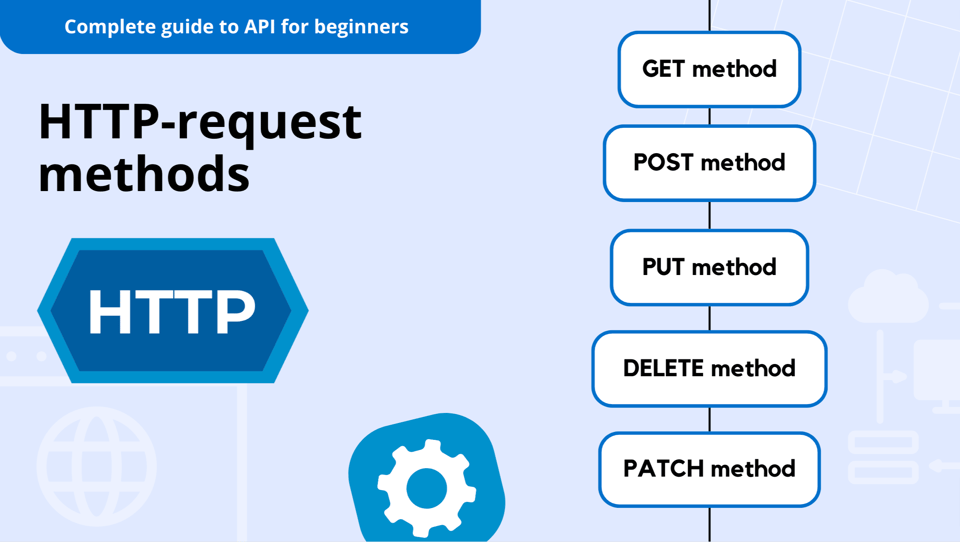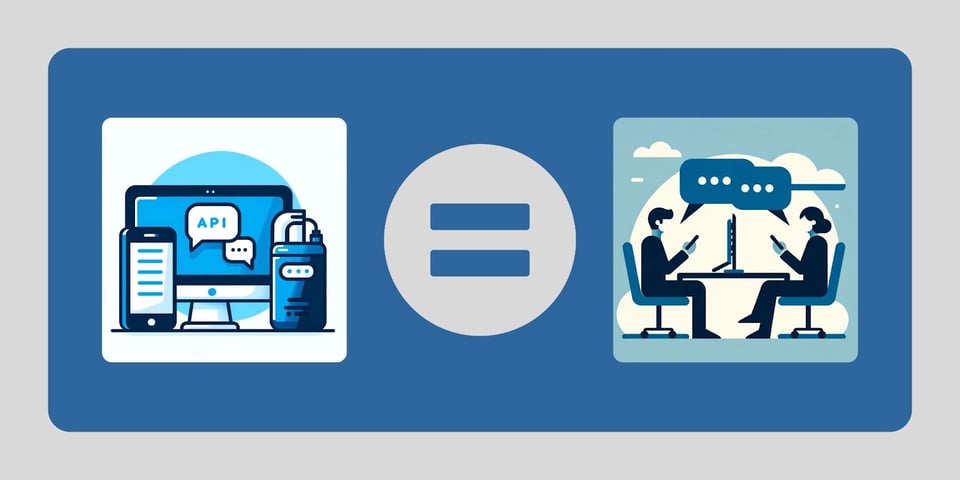
Automate your work.
Build something new.
NOCODE LTD
Registration number
HE 449108
[email protected]
Join the Latenode Discord Server!
LinkedIn
Facebook
Instagram
Youtube
Reddit

In this article we’ll break down the most popular HTTP-request methods for REST API, discover what’s the difference between Post, Get, Put, Delete and Patch methods and how to use them all!
If API is the way applications talk to each other, then HTTP-requests are the sentences. And just like sentences, we can divide them into groups depending on the aim of the sentence, do we want to ask something, or deliver a message.

So, in the REST API, HTTP-requests are divided into methods depending on their purpose.
Here are the most usable methods:
Let’s find out what these methods are step-by-step!
HTTP GET requests are designed for retrieving information from a specified resource on the internet without altering the data. This method is safe because it doesn't change the data's state. It's essential to grasp this concept to distinguish what is a get request from other types of HTTP requests, like POST or PUT, which are used to modify or add data on the server.
GET requests should consistently return the same results if made multiple times, unless the data has been updated by a POST or PUT request. This characteristic is a fundamental part of understanding the difference between GET and POST requests, as well as the role of PUT requests in web development.
When a GET request is made, the server responds with different status codes depending on the outcome:
These responses are crucial for developers to understand how their requests are being processed and are part of learning about HTTP methods, including GET, POST, and PUT.
Let's look at some practical examples to understand how GET requests are used:
HTTP POST requests are essential in web development for creating new subordinate resources, such as adding a file to a directory or a new row to a database table. This method is especially relevant when discussing what is a post request, and how to send a post request.
In the context of RESTful services, POST is primarily used to introduce a new entity to a collection of resources, a process central to understanding the difference between get and post, as well as get post put interactions.
It's important to note that responses to POST methods aren't cacheable unless specified by Cache-Control or Expires header fields, distinguishing POST from get requests in terms of cache behavior.
Unlike GET requests, POST is neither safe nor idempotent. This means executing identical post requests consecutively will result in creating multiple unique resources, highlighting the practical implications of post and get, post and put, as well as the broader request method landscape.
When a POST operation successfully generates a new resource on the server, the appropriate response is a 201 (Created) status code. This response should detail the request's outcome, reference the new resource, and include a Location header, providing a real-world application of post request examples and HTTP post response insights.
There are instances where a POST action doesn't lead to a uniquely identifiable resource. In such cases, the server may return a 200 (OK) or 204 (No Content) status, reflecting on the nuanced differences in post vs put request, get vs post, and the overall request methods framework.
To illustrate, consider these example URIs that embody post to url and POST method practices:
Use PUT APIs primarily to update an existing resource (if the resource does not exist, then API may decide to create a new resource or not).
If the request passes through a cache and the Request-URI identifies one or more currently cached entities, those entries SHOULD be treated as stale. Responses to PUT method are not cacheable.
HTTP PUT requests are crucial for tweaking existing online content or adding new items if they don't already exist. This method shines when you're updating details on a webpage or submitting new entries, straddling the line between what is a put request and put vs post decisions. It's a fundamental tool in the developer's kit, especially when debating post and put usage or exploring the nuances of put and post actions.
If a PUT request passes through a digital storage spot (cache) and finds that it's addressing content that's already stored, it flags that content as old news. What's interesting here is that the outcomes of these PUT actions don't hang around in the cache, setting them apart from how get and post requests are handled. This distinction is pivotal in the difference between get and post, as well as understanding the strategic deployment of get post put operations in web development.
Let's look at PUT doing its thing:
DELETE method
How DELETE Works with Web APIs
The DELETE function in web APIs is straightforward: it gets rid of resources you point to with their web addresses (URIs).
Here’s something interesting about DELETE: it’s supposed to work the same way every time. If you delete something, it should stay deleted. But, some people argue that since the item isn't there anymore, trying to delete it again doesn't really do the same thing, which could make you think twice about whether DELETE always works the same way. It's a topic some people like to discuss and see differently.
If your DELETE request goes through a place where web info is saved (like a cache) and it finds stuff under the same address, that stuff should be marked as old. And just so you know, the answers you get back from a DELETE don't get saved in this cache.
What Happens After You DELETE
What happens after you hit DELETE can vary a bit:
If you try to delete the same thing twice, the second time won’t really do anything new because the item was already deleted the first time. So, you’ll probably get a 404 (NOT FOUND) because, in the server's eyes, there’s nothing there to delete anymore.
HTTP PATCH requests are used to update part of a resource.
Like PATCH, PUT requests can also change a resource. But here's a clearer way to think about it: use PATCH when you want to update just a piece of the resource, and go for PUT when you're planning to replace the whole thing.
Keep in mind, though, that using PATCH in your app might run into some issues:
Not all web browsers, servers, and frameworks fully support PATCH. For example, Internet Explorer 8, PHP, Tomcat, Django, and many others either don't support PATCH at all or don't handle it properly.
How to use GET/POST/PUT/DELETE methods with no code?
The answer is clear: use no-code/low-code tools for it! Latenode is a perfect choice, because it has an HTTP-request node where you can use any of these methods to integrate with ANY app that has an API.
You can use this template that uses just some of HTTP-request abilities,
Now that you're equipped with knowledge about HTTP request methods like GET, POST, PUT, DELETE, and PATCH, you're prepared to take your understanding of APIs to the next level.
However, our exploration doesn't conclude here. We invite you to delve into our final article - REST API Headers & Body, to further refine your mastery of APIs.
Should you have questions or desire further discussion, we welcome you to join our Discord community. There, we're committed to sharing insights and providing support as you continue your journey through the world of automation.
Related articles: